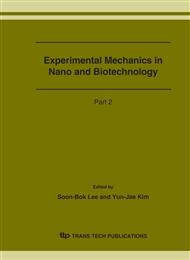p.1019
p.1023
p.1027
p.1031
p.1035
p.1039
p.1043
p.1047
p.1051
An Evaluation of Low-Cycle Fatigue Property for Sn-3.5Ag and Sn-0.7Cu Lead-Free Solders Using Surface Deformation
Abstract:
The low-cycle fatigue behavior and the relationship between the surface features in the low-cycle fatigue testing and the fatigue life of Sn-3.5Ag and Sn-0.7Cu lead-free solders were investigated at strain rate of 0.1%/s at room temperature, 80 and 120oC. In addition, the fatigue life was estimated by using the surface deformation of the solders, and image processing. And also, it was compared with Coffin-Manson type of fatigue behavior. The fatigue life of Sn-3.5Ag solder was superior to that of Sn-0.7Cu solder at temperatures, 80 and 120oC. The fatigue life determined by surface deformation indicated a close behavior to Coffin-Manson type fatigue behavior in those solders. Therefore the low-cycle fatigue life of solders could be estimated by the surface deformation.
Info:
Periodical:
Pages:
1035-1038
Citation:
Online since:
December 2006
Authors:
Price:
Сopyright:
© 2006 Trans Tech Publications Ltd. All Rights Reserved
Share:
Citation:


